Toad blinked in the bright sun.
“Help!” said Toad. “I cannot see anything.”
“Don’t be silly,” said Frog. ‘What you see is the clear warm light of April.’
From Frog and Toad Are Friends by Arnold Lobel
I hope you find some fresh spring reads here for you and the children in your life and that you give yourself permission — often permission is all it takes — to enjoy the light, wherever you are, whatever the day.
Mama Bird, Baby Bird by Angela Johnson, illustrated by Rhonda Mitchell (1994)
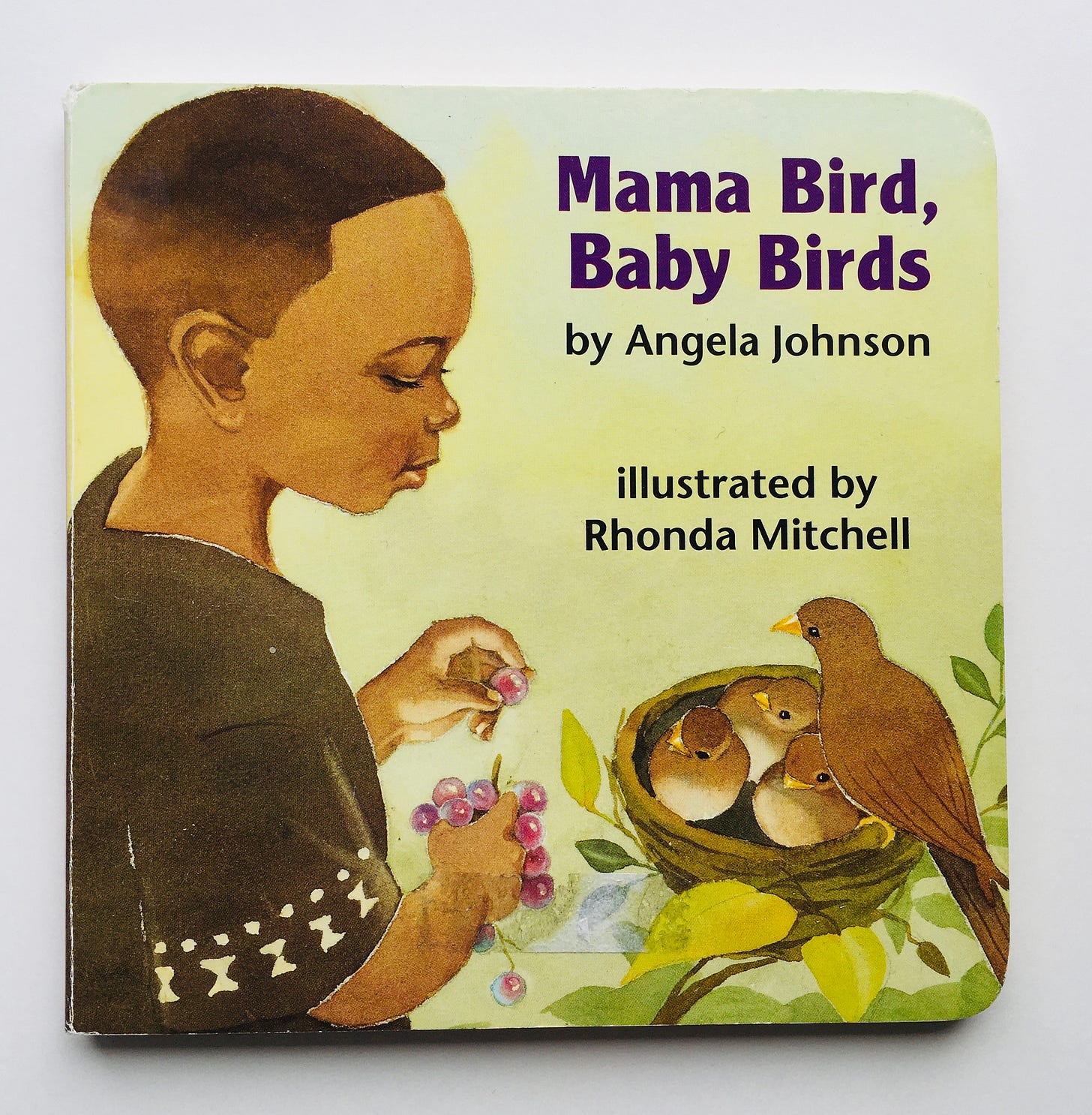
All of Angela’s Johnson Joshua books are very simple — they’re board books, after all — but especially sweet: there is a lot of care and comfort in this little boy’s life that imparts a lovely feeling to the reader. In this title, Joshua and his sister discover baby birds in a nest by their front stairs one morning, and as they witness how the mother bird takes care of her little ones, they’re reminded of how their mother cares for them.
Johnson’s ability to depict everyday life — and the solace to be found there — is unmatched and it’s frankly amazing how well she does it here in only 38 words. If you have a baby or toddler, get your hands on this one as soon as you can.
Wet World by Norma Simon, illustrated by Alexi Natchev (1954)
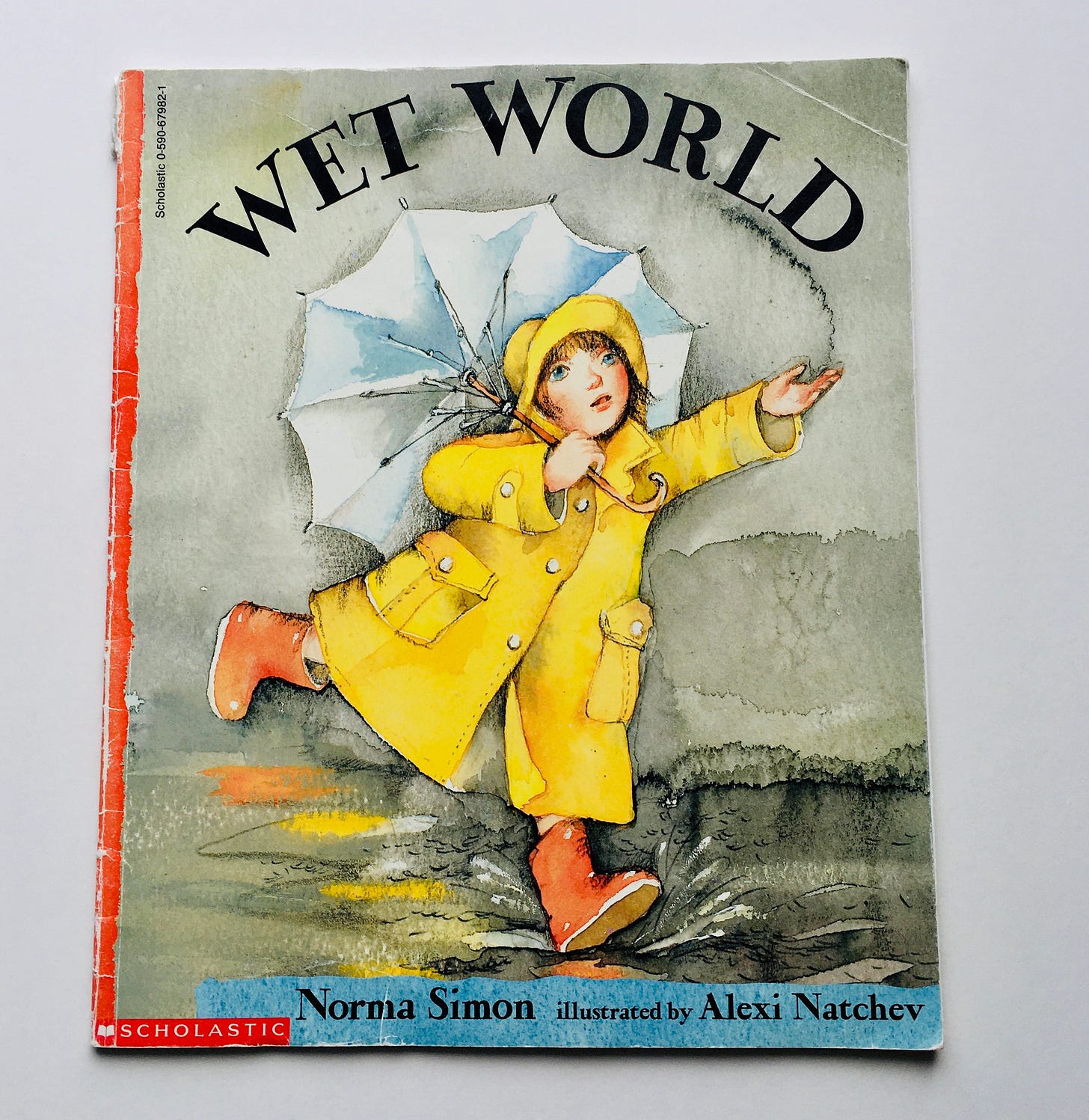
More a poem than a story, this simple narrative follows one little girl through her city and home over the mundane course of a day. Filled with sensory details and sound effects that bring a rainy day to life, Natchev’s evocative pastel and watercolor illustrations add to the murky, dreamy tone, while also depicting the warmth and care radiating from this child’s parents and home. A lovely balance between adventure in the wet world outside and its cozy opposite inside, this is a perfect read for every spring.
Tiny Jenny: Little Fairy, Big Trouble by Briony May Smith (2024)
This is undoubtedly my favorite new book for spring, and here’s why: a tiny, wingless fairy is born to a family of wrens. (Unbearably adorable with immediate Ugly Duckling vibes: check.) Her family totally loves and accepts her exactly as she is. (Foundational self-esteem and a sense of belonging: check.) She is an absolute menace in the forest. (Digging up squirrel nuts — they can’t remember where they buried them anyway! Check.)
Eventually Tiny Jenny wants some wings, though — who doesn’t? — so she goes in search of some of her own kind. And here’s my favorite twist: she finds a whole bunch of fairies (the collective noun for fairies is a herd; you’re welcome) and they are jerks. JERKS.
Grab the nearest 5-8-year-old child in the vicinity and read this one to find out what happens in the end — Tiny Jenny is so easy to root for, I don’t think any of you will be disappointed. Smith’s vivid mixed-media illustrations here are charming and cute as all get out, but it’s her creative story, full of excellent and welcome messages about identity, self-acceptance, and being who you are, that’s pure magic.
Turtle's Race with Beaver by Joseph Bruchac and James Bruchac, illustrated by José Aruego and Ariane Dewey (2003)
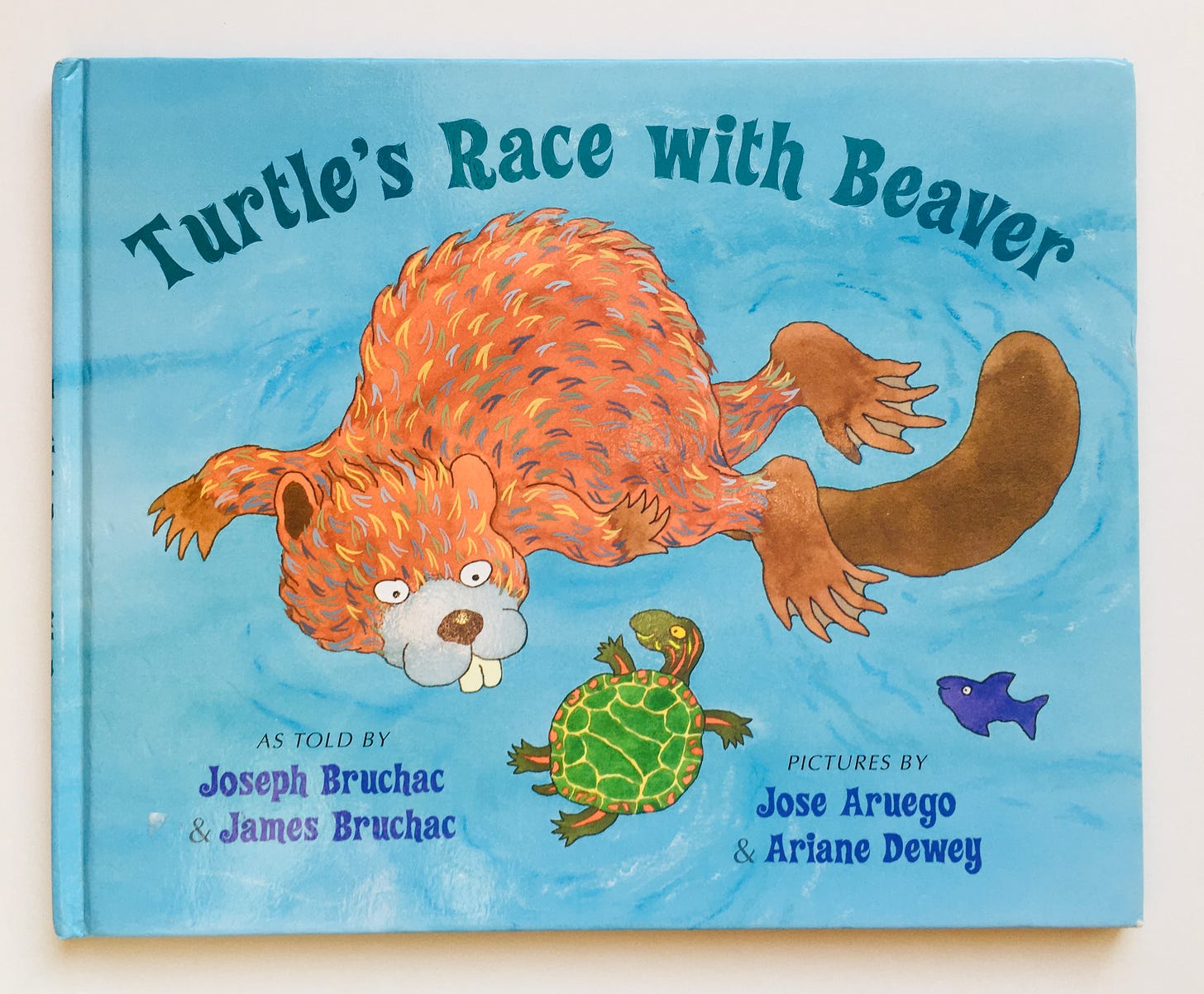
“Long ago, Turtle lived in a beautiful little pond…” until Beaver moves in and does what beavers do — gnaws down a bunch of trees and builds a dam — and to her deep dismay, Turtle finds her beloved pond much deeper than it was before.
She confronts this arrogant bozo with the big teeth, but he won’t compromise — things quickly devolve, everyone in the forest gets involved, and a race ensues. Aruego’s and Dewey’s pen-and-ink, gouache, and pastel illustrations are imbued with the most minute gestural humor, and their depiction of the brilliant way Turtle uses brain-over-brawn in this unfair race will leave readers laughing (and deliver a clear understanding of the hubris of Beaver’s ways).
In an author’s note at the beginning of the book, Joseph Bruchac writes, “The story of a weaker animal winning a race is one of the most common motifs in the animal tales of North America,” making a point to explain that this particular story has Iroquois origins but that he has heard it told in English by Seneca, Onondaga, Mohawk, Abenaki, Lenape, and Penobscot storytellers — emphasizing that traditional stories come from many sources and that every storyteller brings something of themselves to the tales they tell.
Lucky us, then, to be the recipients of such stories, which not only bring us into the action (and the cleverness and the comedy) but use familiar animals to teach us something about pride, compromise, and — just maybe — how to be better humans all around.
The Book of Turtles by Sy Montgomery and Matt Patterson (2023)
Speaking of turtles: I originally came across this book because a) in 2024, I became absolutely obsessed with Sy Montgomery’s work and vowed to read everything she has ever written; and b) I loved the adult version of this title, Of Time and Turtles: Mending the World, Shell by Shattered Shell (it’s excellent, and if you want a grownup recommendation for spring, that’s mine).
I was struck, though, by how special it is on its own. Montgomery is an outstanding nonfiction and nature writer — I’ll read anything she writes in any form for a reason — and here she makes turtle science applicable to elementary and middle school readers with both economy and style. (If you have a kid who gobbles up nonfiction, this one is gobble-worthy to the nth degree.) Her informative yet super engaging text highlights the incredible diversity and resilience of turtles, and Patterson’s stunning acrylic illustrations — some so finely detailed and realistic, I first mistook them for photographs — bring these remarkable reptiles to life.
You don’t have to be a turtle enthusiast to enjoy this book — I wasn’t until Montgomery made me one. It’s a beautifully crafted celebration of and call to protect these extraordinary animals, as well as a reminder that we (still) live in a wild and beautiful world.
Cricket in the Thicket: Poems About Bugs by Carol Murray, illustrated by Melissa Sweet (2017)
If you are new to poetry (or still deciding), this is the perfect spring read for you. Each small, short poem — they are all only about 4-10 lines long — accompanied by a short fact about the insect they describe is an easy entry point into enjoying rhyme, alliteration, assonance, and beyond.
Though this book is gently educational — you will learn things about a variety of bugs, from fireflies and cicadas to grasshoppers and dung beetles; hooray for science poetry! — it’s mostly pleasure plus humor plus Sweet’s bright, funny, collage-inspired watercolor and mixed media illustrations. Recommended for ages 3-6, especially if you have a nature lover or budding entomologist 🐞
(Am really hoping for a praying mantis emoji. Would settle for a stick bug.)
Frog Day: A Story of 24 Hours and 24 Amphibian Lives by Marty Crump, illustrated by Tony Angell (2024)
“If you want to know what any given frog species eats, you might start by measuring the width of an individual’s head.” Pacific horned frogs’ mouths take up half their head — which comes in handy when they try to eat anything that will fit that happens to wander by, including juveniles of their own species.
If you’re me, you’re immediately sold on a chapter on cannibalistic frogs — truly, I didn’t have to get further when this book fell open in my hands when I picked it off the new nonfiction shelf at the library — but for those of you who need more, let me assure you: this bizarre gem of a book, which is structured to highlight a different species of frog for each hour of the day and written in a personal and engaging style, is delightful.
This is not a children’s book, but nevertheless, I’m recommending it for the oldest elementary kids — age 10 or so — all the way up into high school. What better way to entice your science lover or herp enthusiast than to read about weird and wild frog behaviors around the world? Peeking at Angell’s pen-and-ink illustrations is optional but highly recommended for experiencing the maximum charm of these small but mighty creatures in this small but mighty book.
I also have a Bookshop.org list, Books for spring, in case you’d like to visually browse and/or support this newsletter in another way — I get a tiny commission if you use this link to make a purchase. (Thank you!)
Happy spring, you lovely, irreplacable human 🩷
Sarah





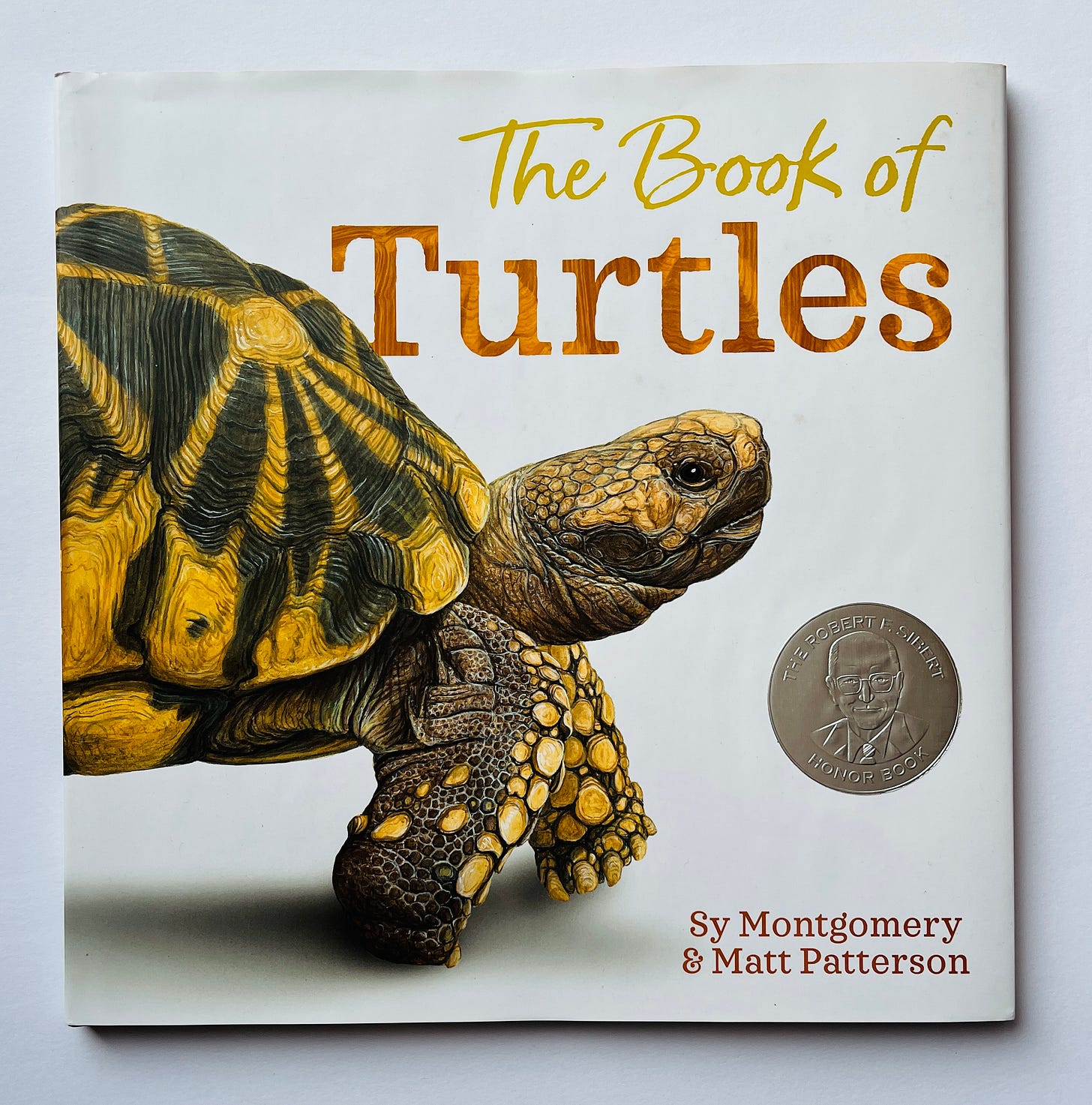
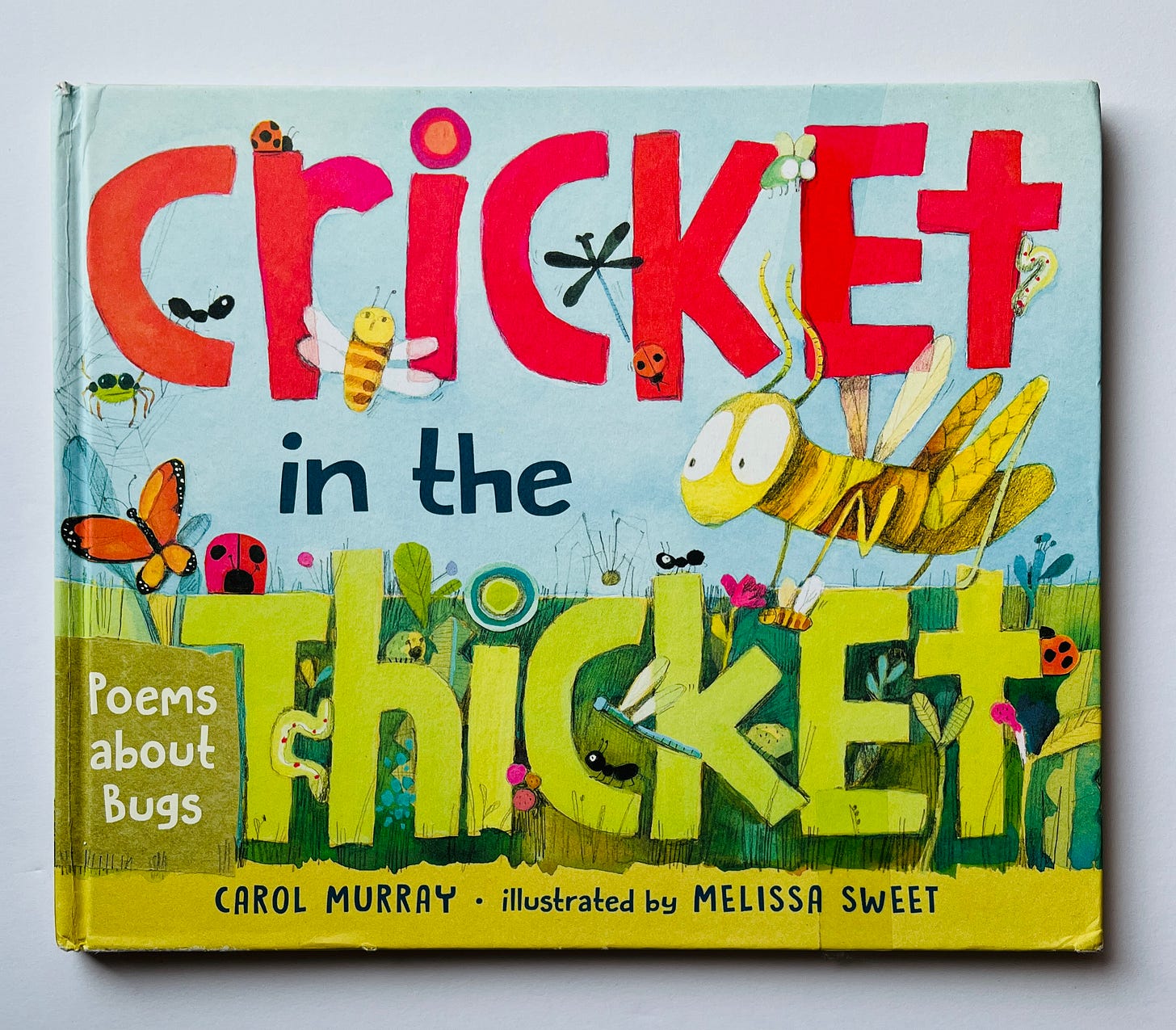
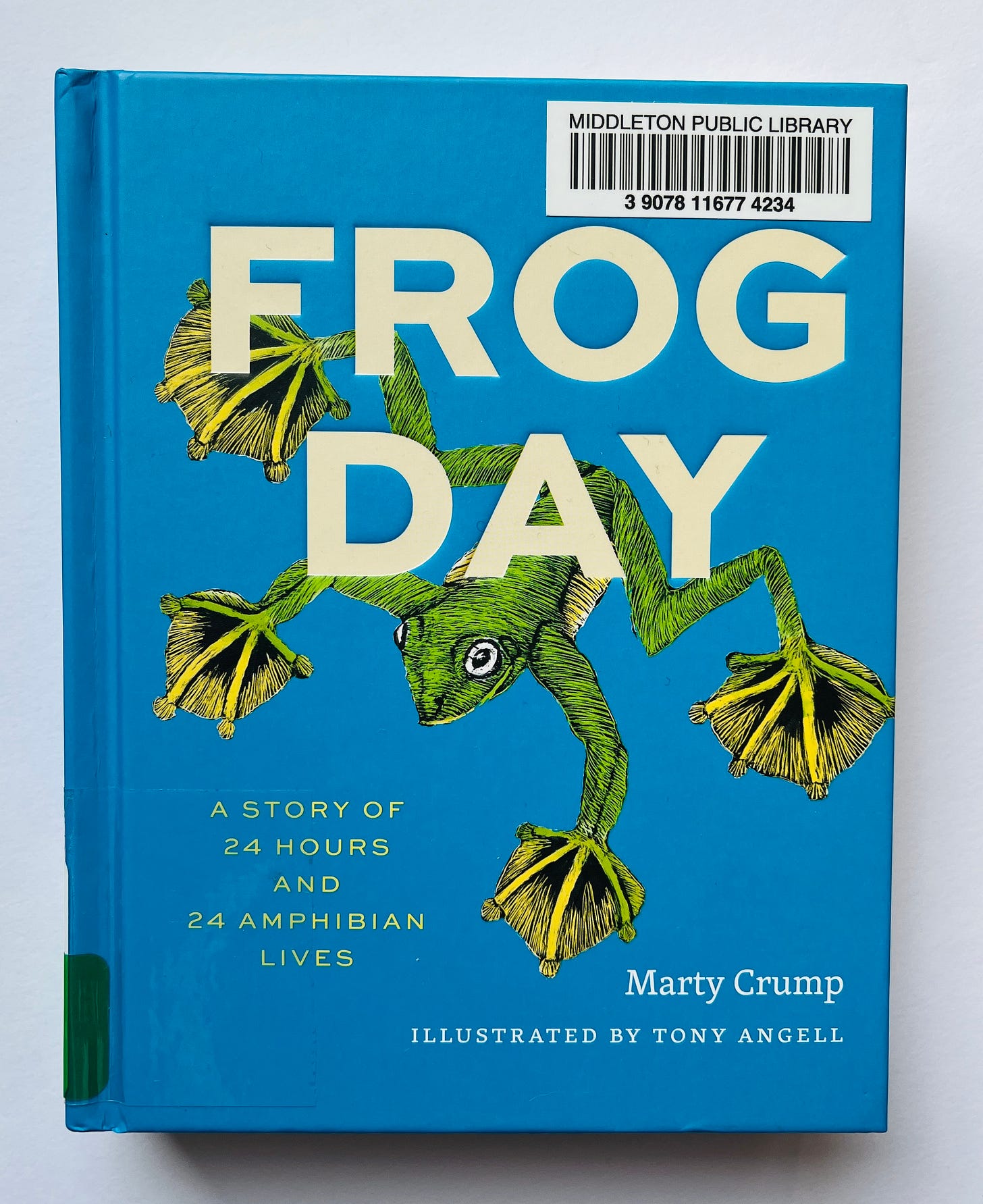
Sy Montgomery seems like precisely the thing for spring. Especially for my non-fiction-obsessed six-year-old. I'm always so grateful for the way these guides bring a sense of refreshment and inspiration to my library trips with him. <3
Spring! Hooray!
Love, love Briony May Smith. We re-read her other books all the time... the language and the illustrations are magical. Ordering this now for Easter baskets.
Did I tell you Claire has shifted from dinosaurs to turtles? We have and enjoy The Book of Turtles very much. If you ever want a turtle-focused post, I'm your gal ;)